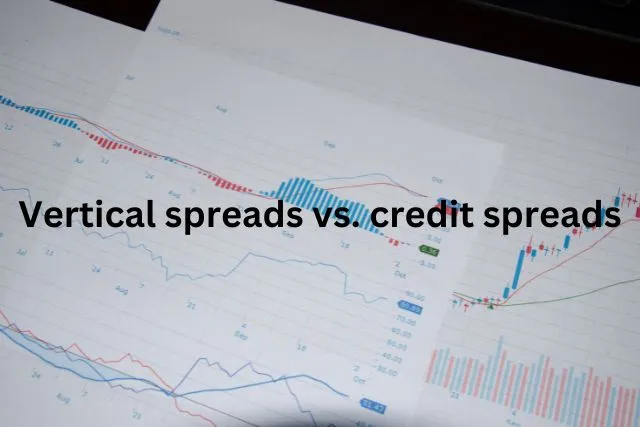A spread is an investing strategy in which the trader takes a position on two different financial instruments that are related but with contrasting values. The investor will buy one instrument and sell the other or vice versa. A typical example of spread trading would be taking a long position on a currency pair, buying one currency, and selling the other simultaneously. Spreads can also occur when futures contracts for commodities and stocks overlap.
Spreads form part of many investors’ portfolios due to their ability to hedge against risk and efficiently manage capital. To generate profits from spreads, traders look to buy low-cost securities while simultaneously selling high-premium securities of similar type, often referred to as ‘scalping’. The trader can capture the difference between the two prices and make a profit by doing so.
In this article, we will focus on vertical and credit spreads concerning trading in the UK.
What are vertical spreads?
Vertical spread or price spread trading involves taking a position at different strike prices of an option on the same underlying security or asset. For example, if you believe that XYZ stock may increase in value, you may buy one call option contract with a lower strike price and then proceed to sell another call option with a higher strike price, thereby creating what is known as a ‘vertical’ spread. By making this investment decision, you stand to benefit from any appreciation in the value of XYZ over time.
Traders typically use vertical spreads to limit their risk, as they will have a net exposure of zero in the long run if the market moves within the two strike prices. If the market moves against you, your losses will be limited to what you paid for the spread plus any commissions incurred. The upside is that if the price of XYZ rises past both strike prices, you stand to make a profit on both options simultaneously.
What are credit spreads?
In contrast with vertical spreads, credit spreads involve taking a position at different strike prices but with different option contracts, such as puts and calls. For example, instead of buying one call and selling another, you may buy a call option and simultaneously write or “sell to open” a put option in the same underlying security. When this spread is executed, the trader will receive a net credit (or payment) from their broker as part of the transaction, known as a credit spread.
As with vertical spreads, there is limited risk involved for traders when executing credit spreads because there will be zero net exposure if the market does not move too far away from both strike prices. The main difference with trading credit spreads is the extra cash generated from writing puts and receiving premiums, which means that even if XYZ stock does not rise much higher than either strike price, traders can still profit from the premium payout.
Vertical spreads vs. credit spreads

When comparing these two strategies, it is essential to consider their respective uses. Vertical spreads are often used as directional trades where investors have a strong view of market direction and want to take advantage of time decay for greater potential profits.
On the other hand, credit spreads are often used as a neutral trade where investors have a less specific view of market direction but still want to take advantage of time decay and collect an up-front credit.
In terms of risk/reward, vertical spreads generally offer lower returns than credit spreads. However, they are also associated with less risk as losses are limited to the cost of setting up the spread rather than depending on where the underlying asset closes at expiry.
The bottom line
When capitalising on options strategies in the UK, traders need to choose the strategy that best suits their trading profile and preferences. Both vertical and credit spreads can provide attractive opportunities for traders who understand how each works and how to apply them correctly. It’s also important to note that these strategies should be used in conjunction with other trading strategies as part of a well-diversified portfolio. By doing so, traders can increase their chances of achieving long-term market success.
FAQs
Q1: What is a vertical spread in trading?
A1: Vertical spreads involve creating a position at different strike prices of an option on the same underlying security. This strategy, often used for directional trades, aims to limit risk and capitalize on potential asset appreciation.
Q2: How do credit spreads differ from vertical spreads?
A2: Credit spreads, unlike vertical spreads, involve taking positions at different strike prices with different option contracts. Executing a credit spread results in a net credit or payment to the trader, offering an additional income source.
Q3: What considerations are crucial when comparing vertical spreads to credit spreads?
A3: The choice between vertical and credit spreads depends on the trader’s market outlook. Vertical spreads suit directional trades, while credit spreads, with a neutral approach, allow traders to profit from time decay. Vertical spreads offer lower returns but come with less risk, limiting potential losses.

